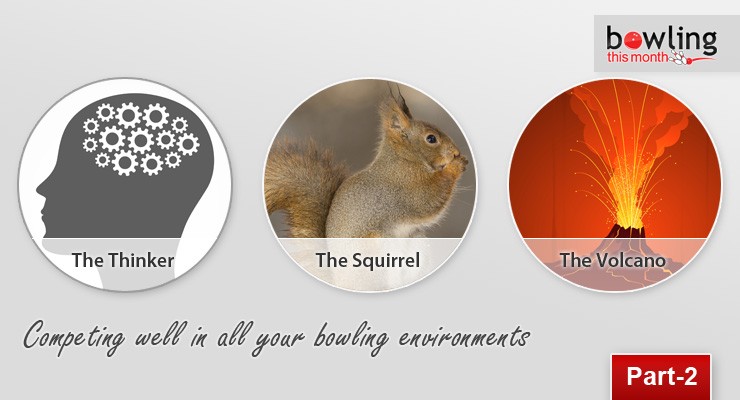Last month, the relationship between a bowler’s skill sets and their peak performance was introduced in a new way. Using the Venn diagram to discuss the mental, tactical, and physical game, bowlers can identify which of the three most common types of bowler they are and predict the chance of peak performance.
This month, we’ll discuss the application of this model based on the bowling environment. We’ll also discuss ways to improve your chances at peak performance. To refresh your memory, take a look at the “Skill Sets Diagram” in the Venn bowling universe and the table below defining the common bowler types.
Four common bowler types
Your bowling environment
This model is useful when used as a backdrop to analyze your ability to compete in your own bowling environment(s). The more variety you have in your environment, the larger the area that needs to be represented in the bowling Universe (See Environment 1 and 2). Bowlers with a lot of variety in their environment will invariably need a larger “peak performance” intersection in order to have success.
In the Environment 1 image, we see an approximation of a bowler who competes in a very limited setting. This would be a bowler who might only compete in one center in one situation, like league. The environment is very stable and well known and there is very little chance that the bowler won’t be competing at their best based on the current skill set.
In Environment 2, we see a situation where there is a ...
This article is only available to Bowling This Month subscribers. Click below to get instant access to this article and all of our other premium instructional content.
Subscribe to Bowling This Month
Already a Bowling This Month subscriber? Click here to log in.
Image Credits: Head / gears illustration (©iStock.com/PASHA18), squirrel image (©iStock.com/hardeko), and volcano illustration (©iStock.com/JohnBigl) are licensed for use by BTM and are the copyrighted property of their original creators.
